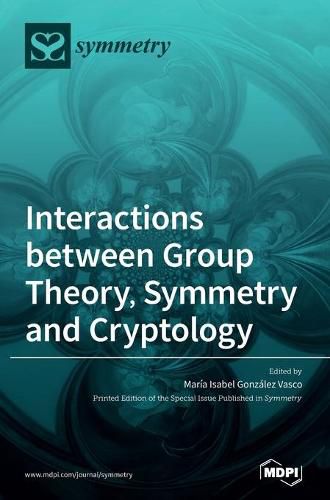Readings Newsletter
Become a Readings Member to make your shopping experience even easier.
Sign in or sign up for free!
You’re not far away from qualifying for FREE standard shipping within Australia
You’ve qualified for FREE standard shipping within Australia
The cart is loading…






This title is printed to order. This book may have been self-published. If so, we cannot guarantee the quality of the content. In the main most books will have gone through the editing process however some may not. We therefore suggest that you be aware of this before ordering this book. If in doubt check either the author or publisher’s details as we are unable to accept any returns unless they are faulty. Please contact us if you have any questions.
Cryptography lies at the heart of most technologies deployed today for secure communications. At the same time, mathematics lies at the heart of cryptography, as cryptographic constructions are based on algebraic scenarios ruled by group or number theoretical laws. Understanding the involved algebraic structures is, thus, essential to design robust cryptographic schemes. This Special Issue is concerned with the interplay between group theory, symmetry and cryptography. The book highlights four exciting areas of research in which these fields intertwine: post-quantum cryptography, coding theory, computational group theory and symmetric cryptography. The articles presented demonstrate the relevance of rigorously analyzing the computational hardness of the mathematical problems used as a base for cryptographic constructions. For instance, decoding problems related to algebraic codes and rewriting problems in non-abelian groups are explored with cryptographic applications in mind. New results on the algebraic properties or symmetric cryptographic tools are also presented, moving ahead in the understanding of their security properties. In addition, post-quantum constructions for digital signatures and key exchange are explored in this Special Issue, exemplifying how (and how not) group theory may be used for developing robust cryptographic tools to withstand quantum attacks.
$9.00 standard shipping within Australia
FREE standard shipping within Australia for orders over $100.00
Express & International shipping calculated at checkout
This title is printed to order. This book may have been self-published. If so, we cannot guarantee the quality of the content. In the main most books will have gone through the editing process however some may not. We therefore suggest that you be aware of this before ordering this book. If in doubt check either the author or publisher’s details as we are unable to accept any returns unless they are faulty. Please contact us if you have any questions.
Cryptography lies at the heart of most technologies deployed today for secure communications. At the same time, mathematics lies at the heart of cryptography, as cryptographic constructions are based on algebraic scenarios ruled by group or number theoretical laws. Understanding the involved algebraic structures is, thus, essential to design robust cryptographic schemes. This Special Issue is concerned with the interplay between group theory, symmetry and cryptography. The book highlights four exciting areas of research in which these fields intertwine: post-quantum cryptography, coding theory, computational group theory and symmetric cryptography. The articles presented demonstrate the relevance of rigorously analyzing the computational hardness of the mathematical problems used as a base for cryptographic constructions. For instance, decoding problems related to algebraic codes and rewriting problems in non-abelian groups are explored with cryptographic applications in mind. New results on the algebraic properties or symmetric cryptographic tools are also presented, moving ahead in the understanding of their security properties. In addition, post-quantum constructions for digital signatures and key exchange are explored in this Special Issue, exemplifying how (and how not) group theory may be used for developing robust cryptographic tools to withstand quantum attacks.